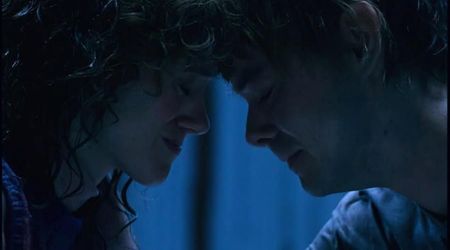‘The Lord of the Rings: The Rings of Power’: How Isildur's refusal to destroy the 'One ring' ensured Sauron's threat to middle-earth?

LOS ANGELES, CALIFORNIA: Only a few days more till the awaited global premiere of the multi-starrer historical fantasy war prequel ‘The Lord of the Rings: The Rings of Power’. The first two episodes are dropping globally on September 2, 2022, on Amazon Prime Video. The prequel saga is set in the middle-earth era. Since the middle-earth second age is mainly the point of focus in the series, it is re-imagined and set almost thousands of years before late author Tolkien’s ‘The Lord of the Rings’ and ‘Hobbit’ films.
Talking about the characters in this poignant tale of the middle-earth second age, one of the most important ones is that of Isildur (Maxim Baldry). Late novelist Tolkien’s lore which would be seen in the prequel has an adventurous and powerful story where there are Elves, Dwarves, Harfoots (One of three breeds of Hobbits), and the Kingdom of Numenor, and so on. One of the most intriguing aspects that fans might not know is how Isildur’s refusal to end the sinister ‘One ring’ unfortunately culminated in Sauron becoming a threat to middle-earth.
RELATED ARTICLES
‘The Lord of the Rings: The Rings of Power’ final trailer released, fans say ‘this is trash, not Tolkien’
'The Lord of the Rings: The Rings of Power': How Sundering Seas came to life in prequel saga
According to LOTR Fandom.com, Isildur (Maxim Baldry) was the oldest son of Elendil (Lloyd Owen). He was born in Numenor in the year SA 3209 of the middle-earth second age.
Isildur definitely played an important role in the ‘War of the Last Alliance’. It was during this war in SA 3441, that Isildur used the broken blade to cut that vile ‘One ring’ from Sauron’s hand. After this, Sauron’s spirit went away from his body. But, as long as his ‘One ring’ that had so much of his dark and destructive power was present, it ensured that Sauron’s spirit also survived. Isildur’s refusal to destroy that ring only solidified the fact that Sauron would be present as a threat to middle-earth for the next many years to come.
'The War of the Last Alliance' in detail
The army of the Last Alliance which also included Gil-galad (Benjamin Walker), Galadriel (Morfydd Clark), and Elrond (Robert Aramayo) gathered at Rivendell in SA 3431 and went marched to war. Isildur along with his three oldest sons Elendur, Aratan, and Ciryon went with the army. Isildur’s wife and their young son Valandil remained in Rivendell.
‘The War of the Last Alliance’ began in SA 3434. Sauron's evil army got badly defeated in the Battle of Dagorlad on the plain outside Mordor. Post that harsh defeat, the army of the Last Alliance entered Sauron's kingdom and laid an open challenge of warring it out within Barad-dûr. This catastrophic siege went on for about seven years and many Men and Elves were killed, including Isildur's brother Anárion, who died in SA 3440.
Finally, in SA 3441, Sauron himself got down from his tower. He ended up fighting with Gil-galad and Elendil on the slopes of Mount Doom. Sauron's body was thrown down, but Gil-galad and Elendil died in the struggle.
Isildur’s refusal to part away from the ‘One ring’ and Sauron’s threat
Captivated by the Ring's apparent beauty, Isildur took it for himself. Elrond and Cirdan were the only two individuals who noticed Isildur's greed-filled actions during that moment. They both had been with Gil-galad during the inevitable war with Sauron. Whilst Isildur alone had stood by Elendil. Sooner enough, whilst heat-induced markings on the Ring had still been visible, Isildur ended up writing a short account of the Ring and its apparent properties. Whilst writing the same, he minutely took note of the fact that it had burned his hand so badly that he believed it would ensure he remained in permanent pain.
Isildur also saw that when the Ring cooled down and seemed to shrink, that moment the writing on its outer band seemed would start fading away. He came to an observation that it might be because of the heat from Sauron's hand. This aspect might have caused the writing to remain visible and heating it again might produce the same effect. But, he had been so much entranced by the Ring that he denied even in writing to take any action which might cause harm to it.










